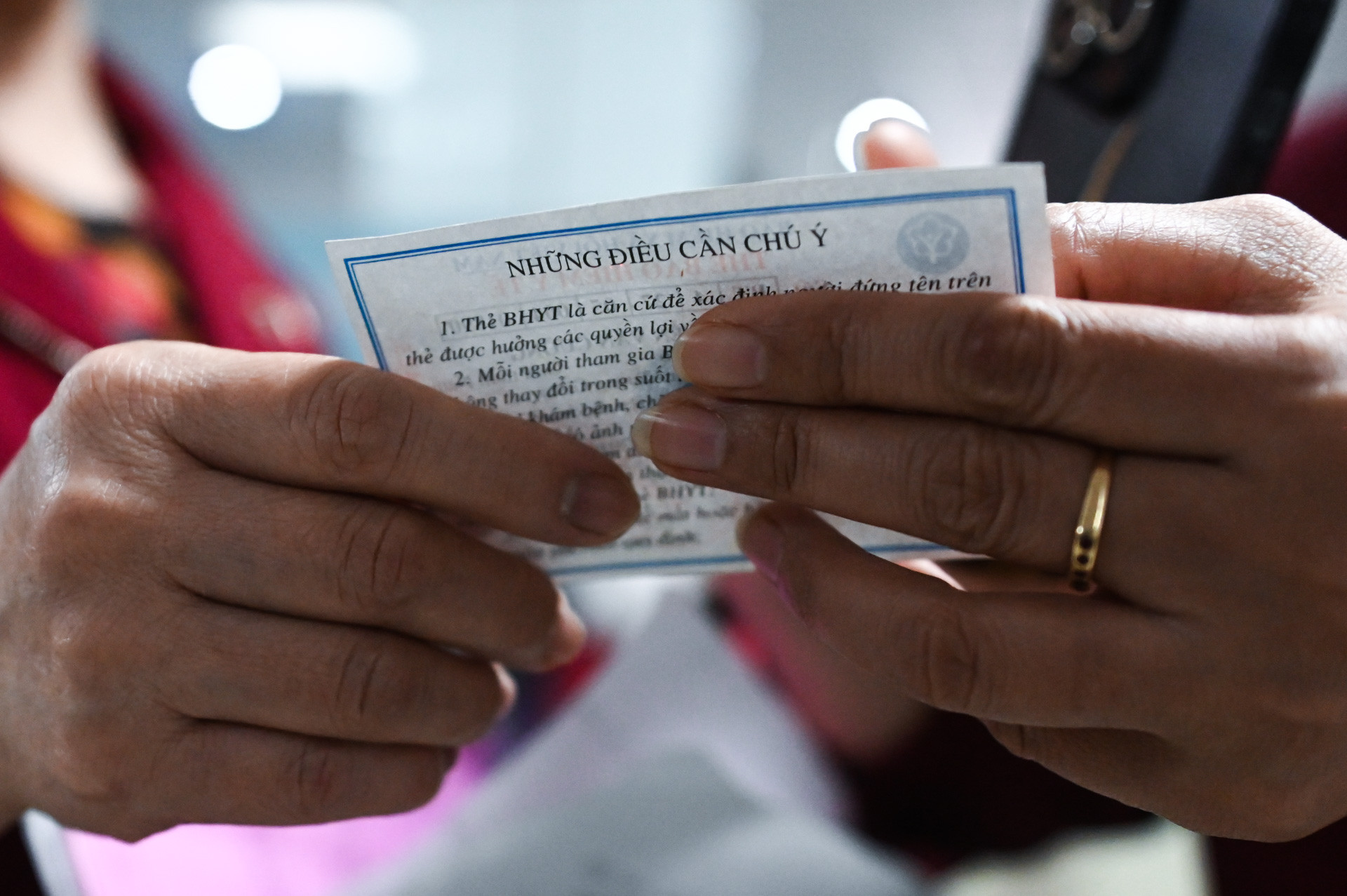
The Ministry of Health (MOH) is collecting opinions for the draft law of the Law on Health Insurance. In the latest version of the report reviewing 15 years of implementing the Law on Health Insurance, the compilation agency pointed out a lot of problems.
In principle, health insurance policies allow families to reduce their spending on healthcare services. However, the number of health insurance participants in Vietnam remains modest and 45 percent of total medical expenses are paid with patients’ own money.
Increased use of healthcare services is the reason. According to MOH, people with health insurance cards have a higher rate of using outpatient and inpatient services than other people.
The amount of co-payment money and money that patients have to pay themselves for medicine, medical equipment and for services not covered by health insurance have led to the self-payment increases.
The current low healthcare service fees which don’t cover all costs and don’t truly reflect real expenses is also a reason behind the increases in self-payments for medical services.
Some hospitals face difficulties in medicine and medical equipment procurement, which leads to a lack of medicine. The drug bidding and drug management scheme is unreasonable. As hospitals don’t have all medicines that patients need, patients have to buy medicine from drugstores.
Currently, the Health Insurance Fund only pays for medical examination, treatment and medical services at medical examination facilities. Meanwhile, some kinds of medical services can be provided by other units, such as drugstores and testing centers.
Regarding the quality of medical examinations with the health insurance scheme, MOH thinks that is still cannot satisfy people’s requirements, especially at grassroots medical facilities and medical centers in mountainous and remote areas.
That explains why people prefer to go directly to provincial hospitals rather than cottage hospitals. As a result, they have to pay a lot for medical services.
“Most central hospitals are overloaded,” the MOH’s report said. “Meanwhile, people feel unsatisfied about services because of the time consuming procedures."
One reason why patients have lost confidence in the health insurance policy is that patients have to pay for medicine and medical supplies (though they don’t have to pay in principle) because clinics cannot provide supplies for various reasons.
In many cases, patients with health insurance policies are prescribed to have tests and use machines and equipment not covered by health insurance, even though there are state-funded machines available. As a result, patients have to pay additional money to use the machines and equipment.
At some hospitals, some kinds of expenses are included when calculating the amount of money health insurance agency has to pay for patients. However, at many other hospitals, patients have to use their own money for surgical gowns, injection fees, inpatient examination fees and others.
MOH has also pointed out another problem which is the ‘product’ of the current health insurance scheme: cottage hospitals tend to retain patients and give local treatment rather than forward serious patients to higher-level hospitals.
This affects the benefits of health insurance participants. In many cases, doctors abuse tests and complicated operations, though they are not necessary, in order to get paid by health insurance agency.
According to the government’s report to the National Assembly Standing Committee on the amendment of the Law on Medical Examination and Treatment, as of 2022, 100 percent of medical non-business public units had been given autonomy, i.e. self-determination. Of this, 253 units have the right to make decisions on regular expenses.
The draft law on amending and supplementing some articles of the Law on Health Insurance is scheduled to be submitted to the National Assembly’s eighth session, slated for October 2024. If it gets the National Assembly’s approval, it will take effect on January 1, 2025.
As of the end of 2023, 93.3 percent of Vietnamese have health insurance. The Health Insurance Fund pays 87-89 percent of total medical expenses for services provided to health insurance participants each year, while the participants pay the remaining 11-13 percent of expenses.
By 2024, the total number of medical facilities registered to provide medical services to patients with health insurance had reached 2,897.
Vo Thu